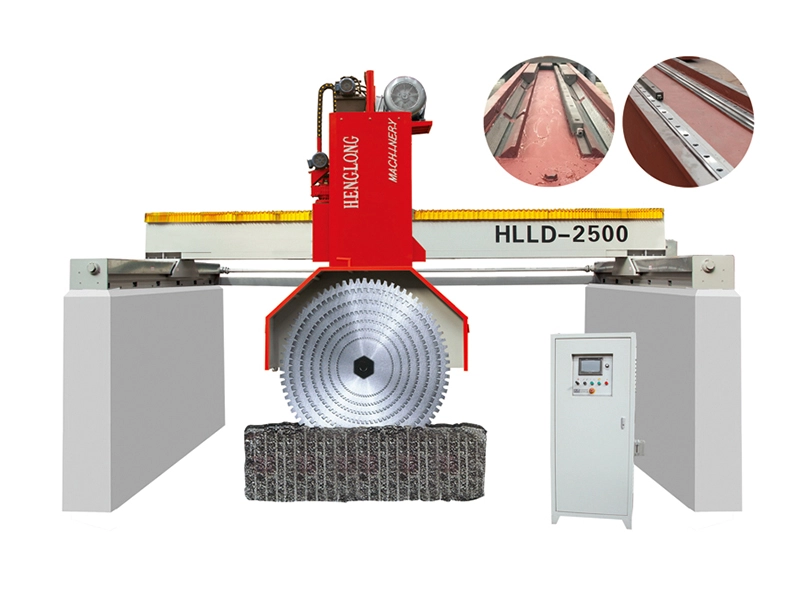Understanding Stone Cutting Machines: Essential Tools for Precision and Efficiency
Time:
May 22,2025
Stone cutting machines are essential instruments in the stone fabrication industry, utilized for a range of applications from residential projects to large-scale commercial endeavors. These machines are designed to make precise cuts in various types of stone, including granite, marble, limestone, and more. Their ability to handle tough materials with accuracy makes them invaluable for stone masons, fabricators, and contractors alike.
At the core of stone cutting machines is their design, which can vary significantly depending on the intended use. Common types include bridge saws, wire saws, and CNC (Computer Numerical Control) machines. Each type has its unique mechanisms and advantages. For instance, bridge saws are particularly well-suited for straight cuts in large slabs, while wire saws are excellent for intricate shapes and minimizing waste. CNC machines, on the other hand, offer unparalleled precision and can be programmed to perform complex cuts with ease.
One of the key features of stone cutting machines is their cutting tools, which typically include diamond blades or saw wires. Diamond is favored due to its hardness and durability, enabling it to cut through the toughest stone materials without significant wear. The choice of blade or wire is critical as it can influence both the quality of the cut and the overall efficiency of the cutting process.
Safety is paramount when operating stone cutting machines. These machines can generate harmful dust and debris, necessitating the use of proper protective equipment and dust collection systems. Additionally, operators must be trained in the safe handling of these machines to prevent accidents and ensure optimal performance.
In terms of maintenance, regular checks and servicing of stone cutting machines are essential to ensure longevity and consistent operating performance. This includes monitoring the condition of the blades or wires, lubricating moving parts, and cleaning the machine to prevent the buildup of stone dust and debris.
The advancements in technology have also introduced innovations in stone cutting machines, such as improved automation and software integration. These enhancements allow for greater precision, reduced labor costs, and increased productivity. As the demand for custom stonework continues to rise, the role of stone cutting machines in the industry will only become more significant.
In conclusion, stone cutting machines are vital for achieving high-quality results in stone fabrication. Understanding their types, features, and maintenance can empower users to make informed decisions that enhance their work efficiency and product quality. Whether you are a seasoned professional or new to the field, familiarizing yourself with these powerful tools will undoubtedly benefit your stoneworking projects.
At the core of stone cutting machines is their design, which can vary significantly depending on the intended use. Common types include bridge saws, wire saws, and CNC (Computer Numerical Control) machines. Each type has its unique mechanisms and advantages. For instance, bridge saws are particularly well-suited for straight cuts in large slabs, while wire saws are excellent for intricate shapes and minimizing waste. CNC machines, on the other hand, offer unparalleled precision and can be programmed to perform complex cuts with ease.
One of the key features of stone cutting machines is their cutting tools, which typically include diamond blades or saw wires. Diamond is favored due to its hardness and durability, enabling it to cut through the toughest stone materials without significant wear. The choice of blade or wire is critical as it can influence both the quality of the cut and the overall efficiency of the cutting process.
Safety is paramount when operating stone cutting machines. These machines can generate harmful dust and debris, necessitating the use of proper protective equipment and dust collection systems. Additionally, operators must be trained in the safe handling of these machines to prevent accidents and ensure optimal performance.
In terms of maintenance, regular checks and servicing of stone cutting machines are essential to ensure longevity and consistent operating performance. This includes monitoring the condition of the blades or wires, lubricating moving parts, and cleaning the machine to prevent the buildup of stone dust and debris.
The advancements in technology have also introduced innovations in stone cutting machines, such as improved automation and software integration. These enhancements allow for greater precision, reduced labor costs, and increased productivity. As the demand for custom stonework continues to rise, the role of stone cutting machines in the industry will only become more significant.
In conclusion, stone cutting machines are vital for achieving high-quality results in stone fabrication. Understanding their types, features, and maintenance can empower users to make informed decisions that enhance their work efficiency and product quality. Whether you are a seasoned professional or new to the field, familiarizing yourself with these powerful tools will undoubtedly benefit your stoneworking projects.
RELATED NEWS








